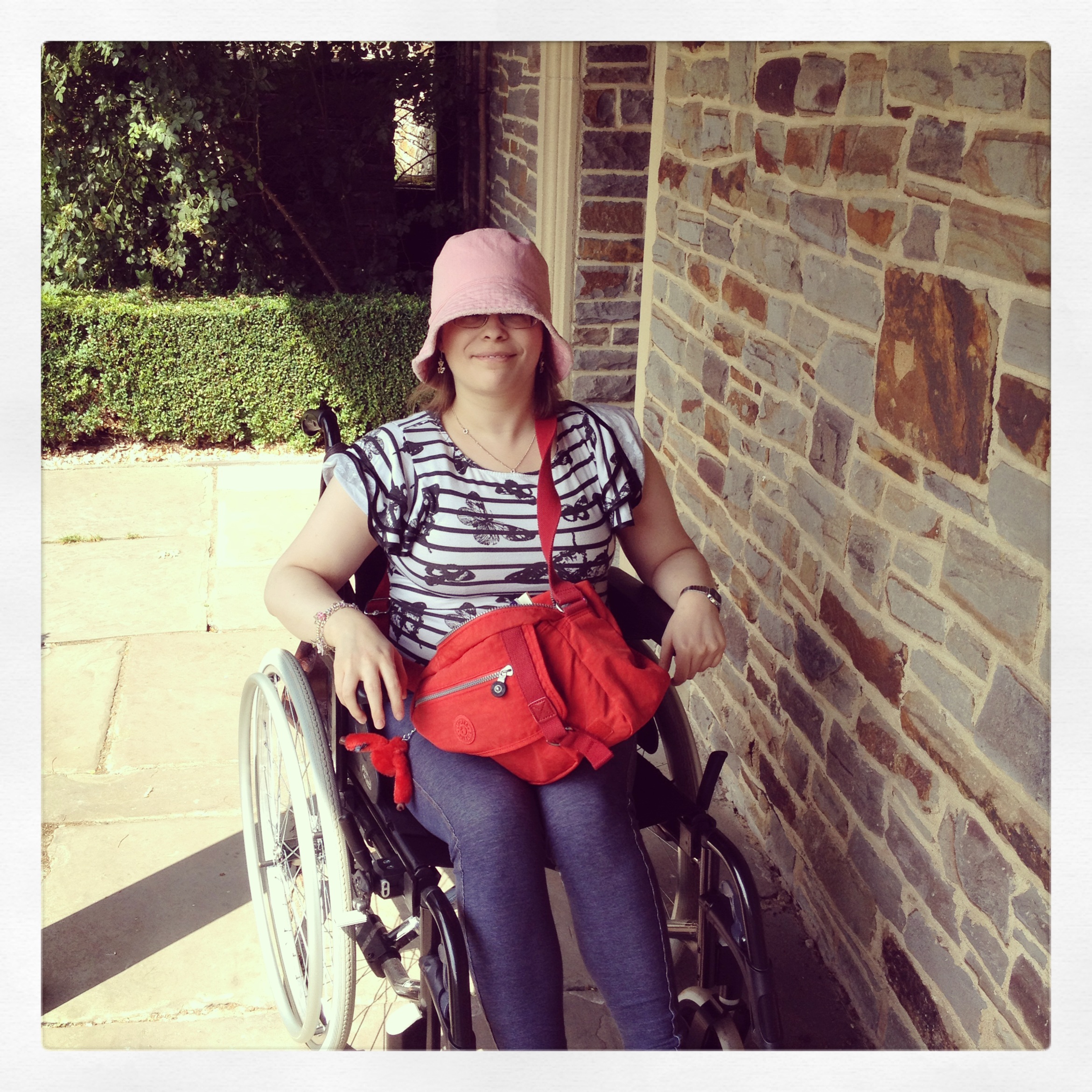Did you know that September 10-16 is ‘National Invisible Chronic Illness Awareness Week’? Well, it’s based more in America, but still there are plenty of ways that people living in other parts of the world can participate – there are even going to be online virtual conferences to learn more about invisible chronic illness and connect with others. To learn more about ‘National Invisible Chronic Illness Awareness Week’, you can visit the website at:
National Invisible Chronic Illness Awareness Week Homepage
As part of the Awareness Event, those running the event have shared ’30 Things’ Meme to share with others what it is like living with an invisible chronic illness – especially as many often exclaim “Nobody understands me!” This therefore, is an excellent opportunity to educate others so that people will learn to understand!

THINGS YOU MAY NOT KNOW ABOUT MY CHRONIC ILLNESS
So here is my ’30 Things about my Chronic Illness’…
1. The illness I live with is… Long-Standing Brain Stem Lesion and Spastic Paraparesis
2. I was diagnosed with it in the year… 2010
3. But I had symptoms since… The stiffness in my legs I have experienced since I was born although due to no diagnosis and no awareness that there was something wrong always thought it was normal!! The dizziness and vertigo began around the age of 8
4. Te biggest adjustment I’ve had to make is… Learning to pace myself, take regular breaks to sit down so that my legs do not give way. For example, do chores in small chunks whereas I preferred to complete them all in one go before my symptoms became worse
5. Most people assume… That because I look ‘normal’ that I must be healthy, whereas the reality is that I often feel extremely unwell, the dizziness being constant and often feeling incredibly nauseous and weak
6. The hardest parts about mornings are: The incredible weakness and fatigue that I feel, sometimes it feels as though I haven’t had any sleep at all
7. My favourite medical TV show is… It has to be ‘Grey’s Anatomy’ – would be much more fun attending hospital appointments if all doctors were as good-looking as they are at Seattle Grace Mercy West!
8. A gadget I couldn’t live without is… Has to be between my iPhone or the Life Line alarm I have had installed – due to the weakness in my legs it means they often give way and so have a significant number of falls and so with these gadgets it means that I can easily reach somebody to help me. The iPhone also helps me keep connected with others when I am too unwell to get out of bed to go on the computer
9. The hardest parts about nights are: When the dizziness is so bad that I cannot get to sleep, sometimes it has been so bad that I have had nights where I have had no sleep at all
10. Each day I take __ pills and vitamins… Every day I take 5 pills (sometimes more when the vertigo is severe I took one to help stop it and ward off nausea)
11. Regarding alternative treatments I… Do not use any, as in my case the condition is not treatable even with conventional medical treatments, only can attempt to control the symptoms
12. If I had to choose between an invisible illness or a visible illness, I would choose… An invisible illness could be more positive in the way that people are more likely to treat you as everyone else
13. Regarding work and career… I would love to have a career and full-time job but often worry if anyone would hire me due to the amount of time that I am unwell and also would question if I could hold down a job due to my legs giving way a lot and the inability to stand for long. Am also not allowed to drive due to the severity of the dizziness and vertigo, and public transport is not an option as it requires standing for a significant period of time
14. People would be surprised to know… Despite all my problems I still like to give back to the community and volunteer my time at a local mental health resource centre, which allows me to help out in any way that I am able. It’s much flexible than a paid job, as if I am really unwell there is no pressure on me to attend
15. The hardest thing to accept about my new reality has been… I am not like everyone else my age and cannot achieve the milestones that I was once looking forward to, passing my driving test being one. Another example, is going out at night with friends, which I am unable to do due to the weakness in my legs, as well as the intense fatigue I experience at night. It has also been hard to accept that I may need to use a wheelchair as my legs keeps becoming worse over time
16. Something I never thought I could do with my illness that I did was… Probably graduating university and attaining a degree in Psychology. It was a lot of hard work and draining physically but had a lot of help from the University itself to be able to achieve this
17: The commercials about my illness: There are none really as it is rare; have not met anyone else with the same condition! I would say that it is quite similar to MS
18. Something I really miss doing since I was diagnosed is… Going on shopping trips with my Mum to our local city centre (Cardiff). Since my legs have become so much worse am unable to go as a lot of walking is involved as well as not being able to queue in the big department stores as my legs often give way
19. It was really hard to have to give up… Doing all the exercise that I enjoyed such as going on my exercise bike or going on walks as not only is it beneficial physically, I often found it helped with mental well-being
20. A new hobby I have taken up since my diagnosis is… Using an exercise machine called ‘Aeropilates’ it gives me the opportunity to take part in cardiovascular exercise whilst lying down without worrying about suffering any falls. Another hobby is writing this blog, something I wouldn’t have done if it wasn’t for the illness
21. If I could have one day of feeling normal again I would… Go on a big shopping spree!
22. My illness has taught me… As I was misdiagnosed with suffering from anxiety before being diagnosed with the neurological condition, I therefore have learnt that doctors are not always right and that if we feel that there is something wrong than we should find an understanding doctor who listens
23. Want to know a secret? One thing people say that really gets under my skin is… “There are people much worse off than you”. Yes, I understand this but it still doesn’t help!!
24. But I love it when people… Listen to me and tried to understand even though it can be difficult due to the unpredictable and unusual nature of the illness.
25. My favourite motto, scripture, quote that gets me through tough times is: “Every day not be good. But there is something good in every day” – So true!
26. When someone is diagnosed I’d like to tell them: It is not the end. You still have a lot to offer just need to be open to new opportunities
27. Something that has surprised me about living with an illness is: Although that I do not know anyone else with the exact same condition, I am still not alone. There are many other people who experience the same struggles as myself and whom I can learn from and can support each other through the tough times
28. The nicest thing someone did for me when I wasn’t feeling well was: Sending me a lovely present in the mail to cheer me up.
29. I’m involved with ‘Invisible Illness’ Week because: To spread awareness of the difficulties faced when living with a chronic invisible illness; to educate people that although you cannot see the problem does not mean that it doesn’t exist. That people with invisible illnesses are not faking or are lazy and that we should be careful when making snap judgements about people. It’s a cliché but it’s true: ‘You cannot judge a book by its cover”. It would also be nice to connect with others living with invisible illnesses like myself for support and friendship
30: The fact that you read this list makes me feel: Positive and that I have helped the cause; and that I have successfully made people more aware of the impact of invisible chronic conditions.
Thank you for reading my answers to the questions! I would love to know your thoughts on any of the subjects raised by the questionnaire. Please feel free to add any comments below. If you would like to connect with me privately, you can now email me at the following email address!:
brainlesionandme@gmail.com






